Rain garden planting scheme
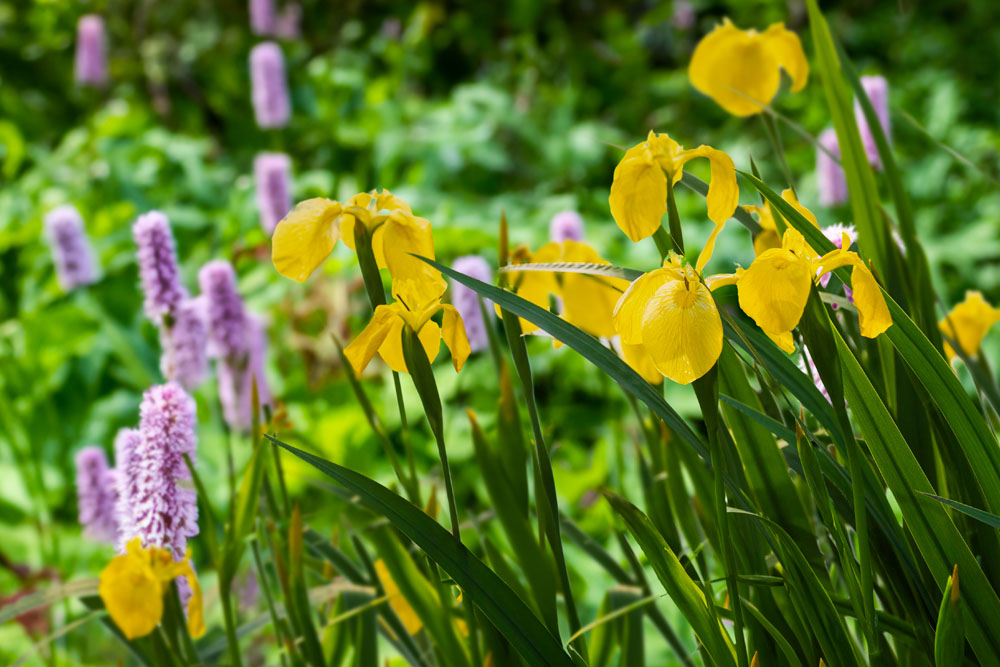
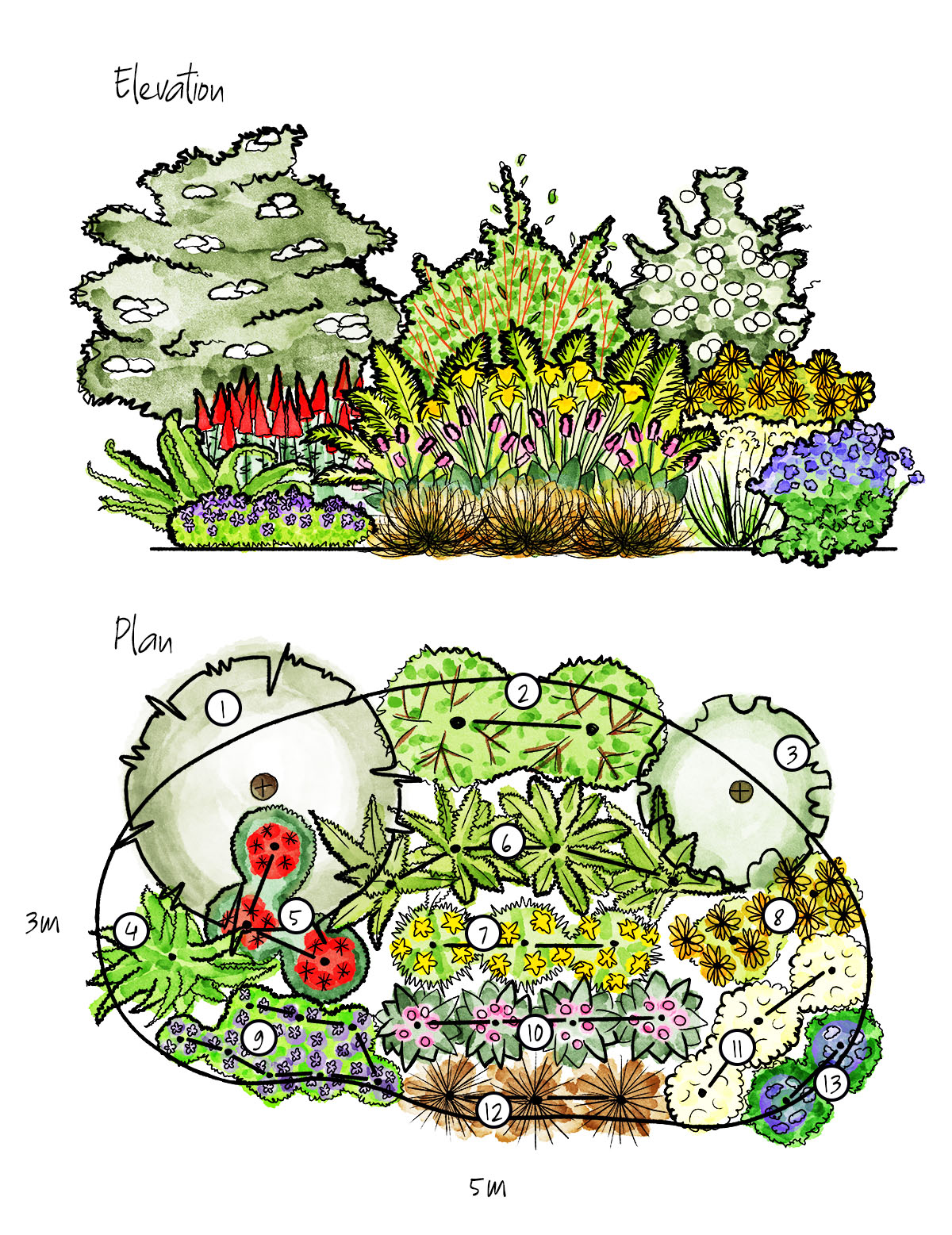
Rain garden planting scheme
Rain gardens are a great solution for capturing, filtering and absorbing rainwater, reducing the amount of rainwater runoff that ends up in our rivers and streams. A rain garden is a shallow constructed depression, planted with deep-rooted native plants and grasses, located in the landscape to receive runoff from hard surfaces such as a roof, sidewalk and driveway. Rain gardens also serve a valuable function in reducing the amount of pollutants reaching waterways.
Rain gardens work by capturing rainwater runoff and allowing it to infiltrate the soil naturally. Garden plants and soil filter pollutants from water as it filters through soil layers, helping to recharge local groundwater supplies while protecting downstream streams from pollution and erosion. A Rain garden can successfully cope with the rainfall from an equivalent surface area 5 times the size of the garden, meaning that for a 100m² area of a roof or hard surface, the Rain garden need only be 20m².
To create your rain garden, choose a location at least 3 meters away from your home to avoid potential water damage. The garden should be located in a naturally low area of the garden where rainwater tends to collect, avoiding areas above septic systems or underground utilities. The size of your rain garden can be determined by the amount of runoff it will have to handle, the type of soil, and the amount of space available. The shape can be natural and curvilinear or more formal and geometric depending on preferences.
Rain gardens need well-draining soil. If the soil in your garden is clay, you may need to amend it with compost and sand to improve its infiltration rate. Choose a variety of native plants that can tolerate both wet and dry conditions. Native plants are adapted to local conditions and will require less maintenance once established. They also provide habitat for local wildlife.
The placement of plants in a rain garden is critical to its success. Plants should be arranged according to their water tolerance. Moisture-tolerant plants should be planted in the centre of the garden, where water collects. These can include plants such as Iris pseudacorus, perfect for humid areas, the fern Matteuccia struthiopteris, or Persicaria bistorta, suitable for areas with stagnant water.
In the intermediate part of the garden, where there is moderate water stagnation, you can plant species such as the Deschampsia cespitosa, tolerant to humidity or the Astilbe, which blooms well in conditions of moderate humidity, and the Luzula nivea, suitable for conditions of medium moisture levels.
Finally, in the external part of the garden, where there is less water stagnation, Cornus alba ‘Sibirica’, which prefers well-drained soil could be a good choice, as Sambucus nigra, which can tolerate a variety of conditions but prefers not to be in standing water, and Viburnum opulus, which does best in well-drained soil.
Initially it is recommended to water the garden regularly until the plants are stabilised. Once established, they should require no further watering. Mulch the garden to conserve moisture and eliminate weeds.
Rain gardens are a subset of a broader concept known as Sustainable Drainage Systems (SuDS). SuDS represent a new approach to managing surface water runoff in urban areas, with the aim of mimicking the way nature absorbs and moderates rainfall runoff. They provide a mixture of natural and man-made solutions. As companies build roads, buildings, sidewalks and other spaces with hard, impervious materials like concrete, asphalt and stone, they need to think about stormwater drainage. If left unchecked, the accumulation of excessive rainfall can cause severe flooding, damage infrastructure, pollute water and cause widespread disruption.
For more detailed information on sustainable drainage systems (SuDS), you may want to read the blog post titled “Understanding Sustainable Drainage Systems (SuDS)” here.
1. Sambucus nigra 2. Cornus alba ‘Sibirica’ 3. Viburnum opulus 4. Dryopteris filix-mas 5. Astilbe ‘Fanal’ (x arendsii) 6. Matteuccia struthiopteris 7. Iris pseudacorus 8. Rudbeckia fulgida var. sullivantii ‘Goldsturm’ 9. Vinca minor 10. Persicaria bistorta ‘Superba’ 11. Luzula nivea 12. Carex testacea 13. Geranium pratense
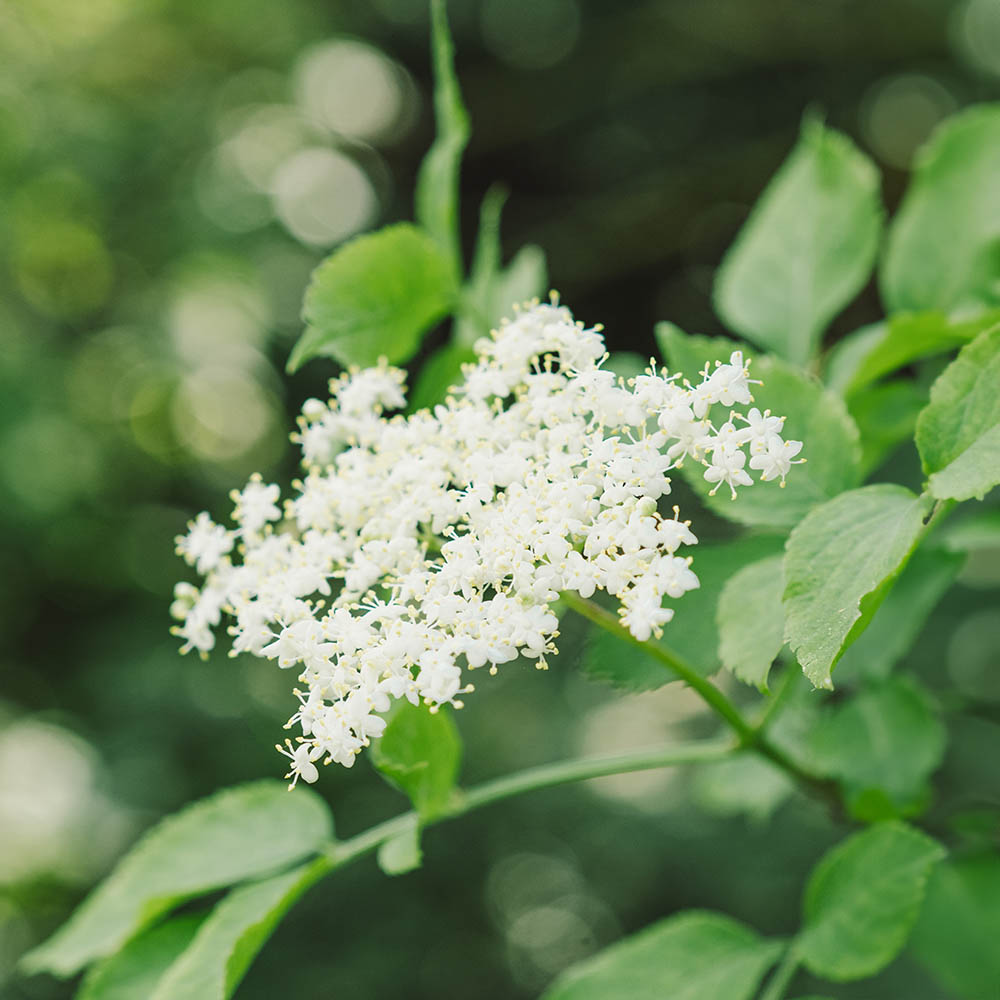
①
Sambucus nigra
Large, bushy shrub or small tree, native to the UK. It has green foliage and heads of fragrant, cream flowers which are followed by black elder berries.

②
Cornus alba ‘Sibirica’
A deciduous shrub with slender, deep red stems, clusters of cream-white flowers in late spring, followed by blue-white berries, and ovate leaves which transition to red in autumn.
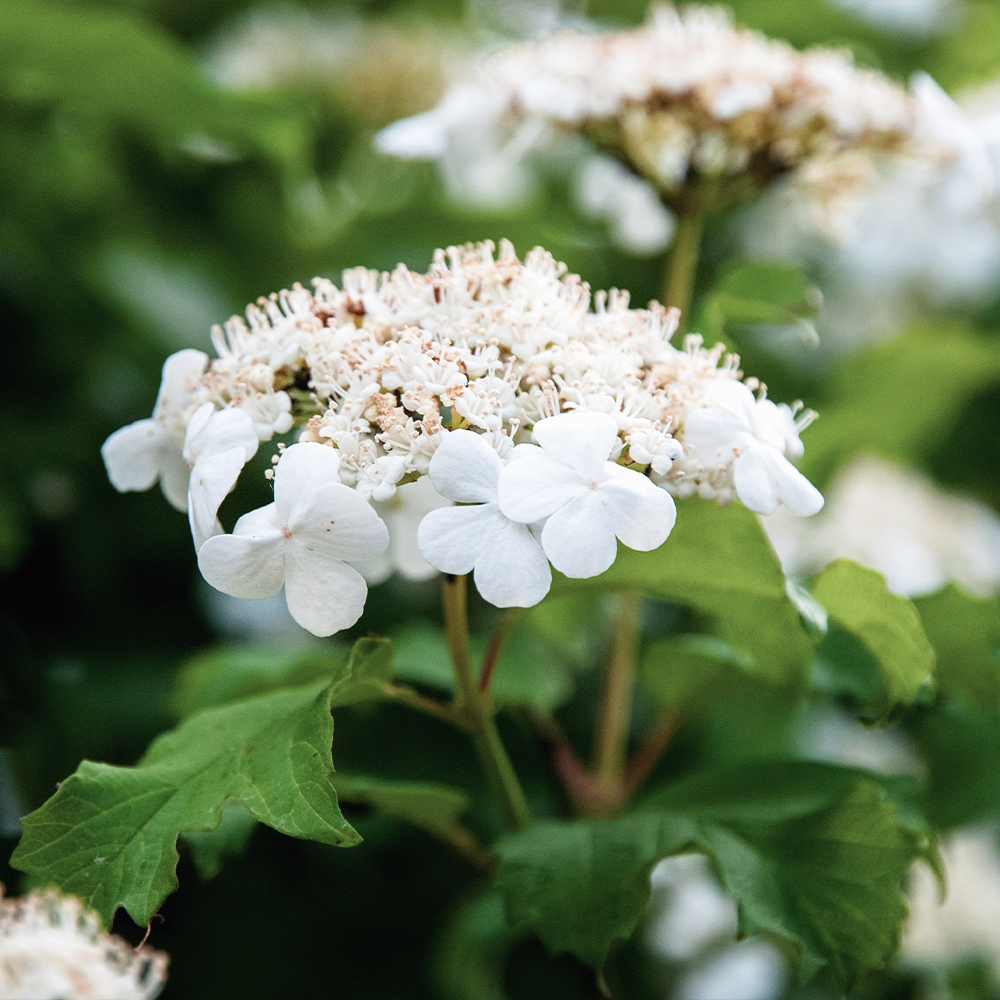
③
Viburnum opulus
Vigorous shrub with lobed, maple-like leaves that provide autumn colour. Snowball-like clusters of white, or green tinted flowers appear in late spring and are followed by translucent red berries. Its flowers are attractive to hoverflies and red berries are a food source for birds.
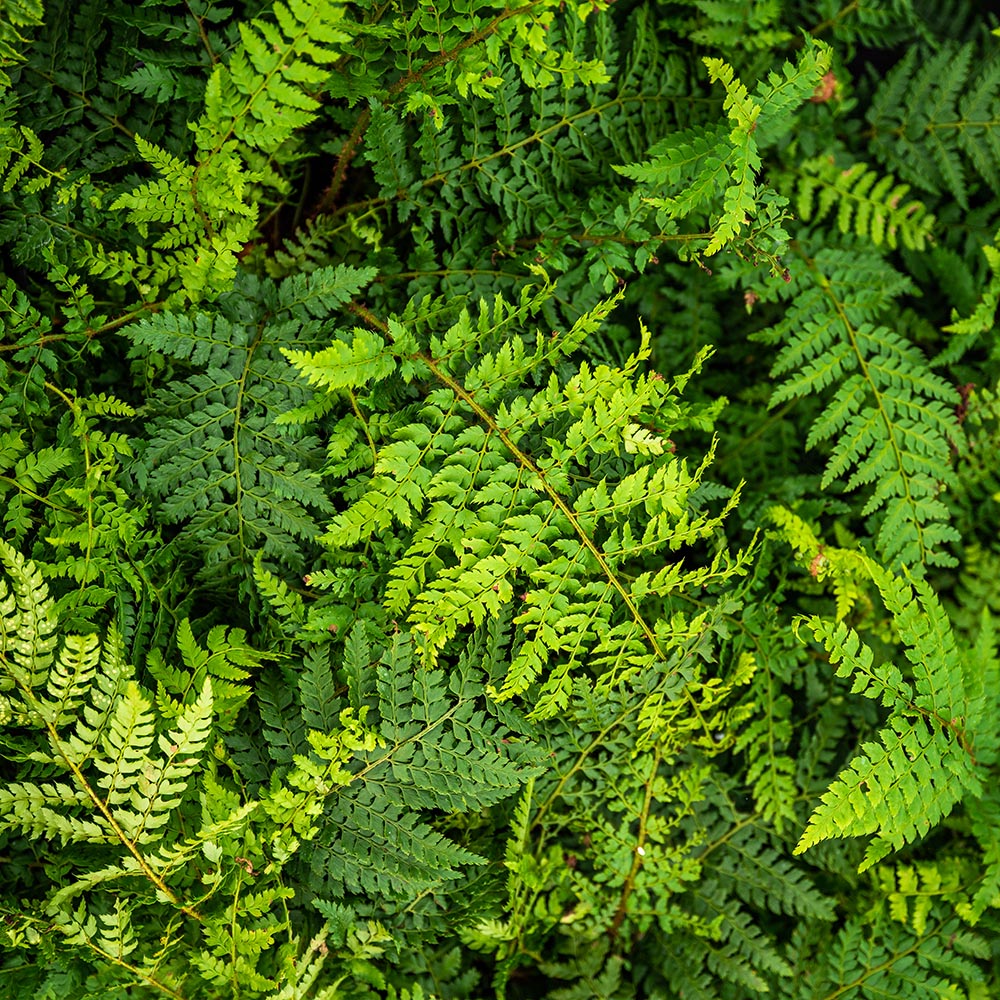
④
Dryopteris filix-mas
A large, deciduous male
fern with green, feathery,
lance-shaped fronds forming
a shuttlecock shape, which
transform to a coppery shade in
autumn.
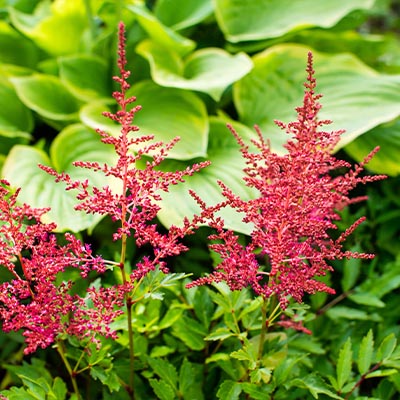
⑤
Astilbe ‘Fanal’ (× arendsii)
A compact herbaceous perennial with narrow, fluffy, dark crimson flowers and serrated, dark green leaves on stems. Perfect for a shady border.
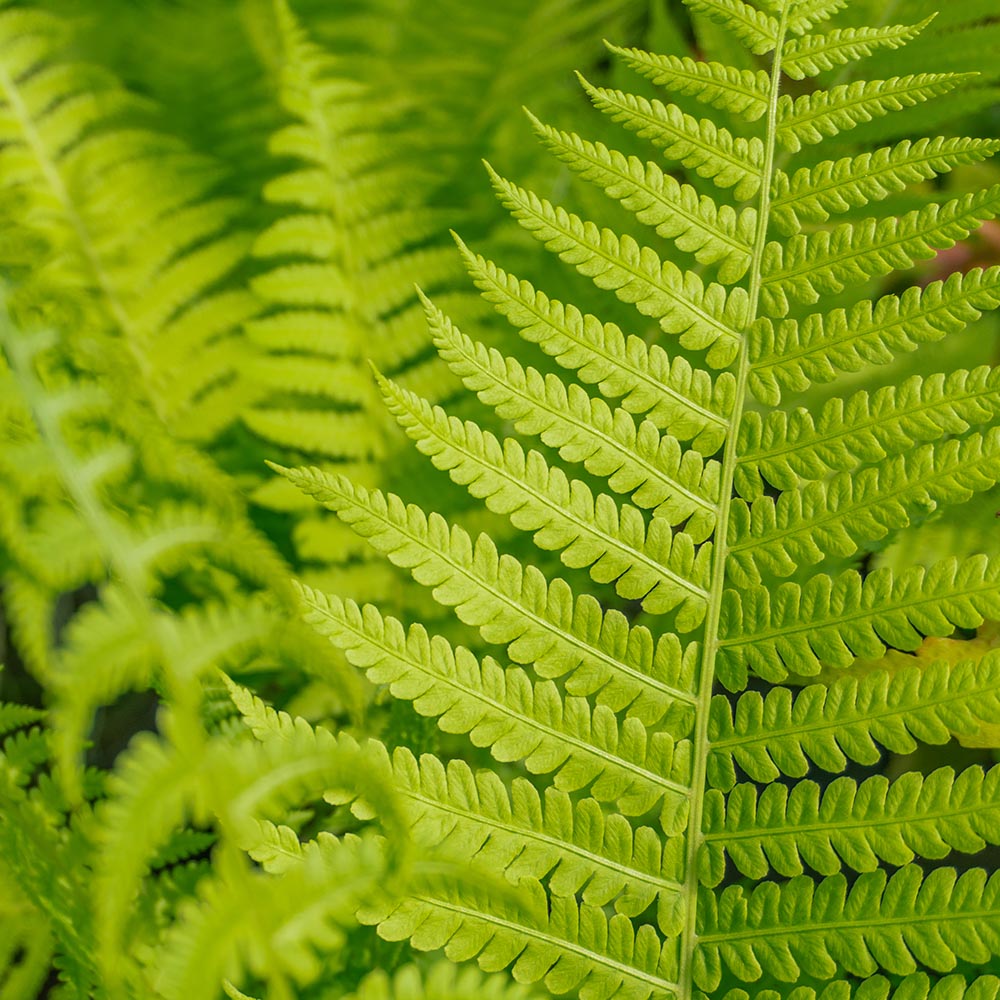
⑥
Matteuccia struthiopteris
A deciduous fern of erect rosettes with lacy, pale green fronds, alongside shorter, brown fronds. A fantastic foliage plant for woodland gardens.
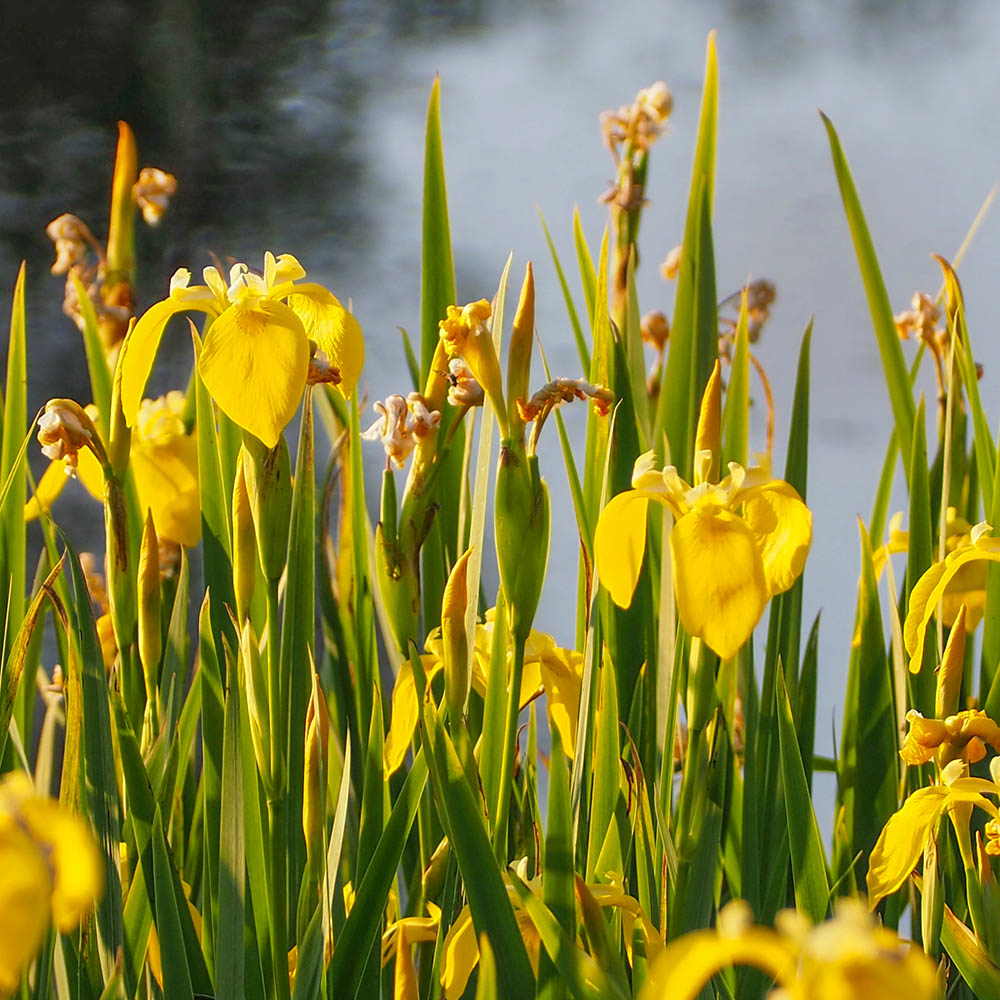
⑦
Iris pseudacorus
A vigorous perennial that forms clumps of green foliage, alongside bright yellow flowers. Looks fantastic when planted within a wildlife garden. It’s a hardy plant that can thrive in various conditions, making it a versatile addition to any garden.
.
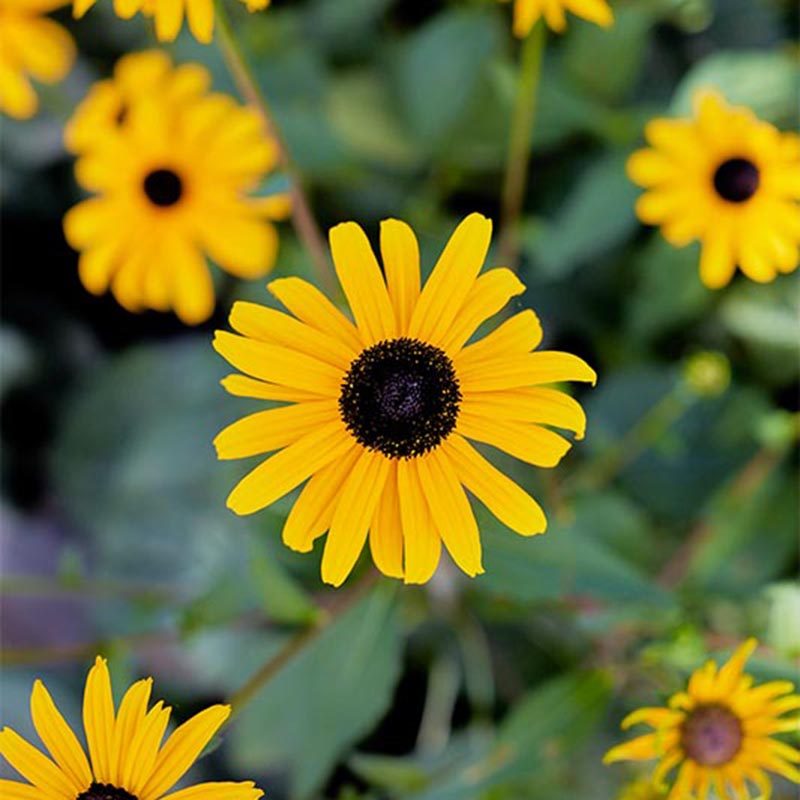
⑧
Rudbeckia fulgida var. sullivantii ‘Goldsturm’
A perennial with large, daisy-like, yellow flowers with black-brown centres from summer to autumn. Rudbeckia fulgida var. sullivantii ‘Goldsturm’ is particularly striking when planted in drifts and works well combined with ornamental grasses.

⑨
Vinca minor
A pretty, evergreen groundcover shrub with pale blue-violet flowers from spring. Suitable for smaller gardens as it’s less invasive than Vinca major. While both species share the same attractive qualities, Vinca minor is more manageable and less likely to overtake other plants in the garden. Vinca minor is also appreciated for its hardiness.

⑩
Persicaria bistorta ‘Superba
A clump-forming, vigorous semi-evergreen perennial with dense spikes of soft pink flowers from summer to early autumn, and veined, ovate, pointed, rich green leaves. Persicaria bistorta ‘Superba’ is ideal for the front or middle of a flower border. Also works well planted as groundcover as it spreads rapidly.

⑪
Luzula nivea
A slow growing evergreen grass with a loose clump of hairy, dark leaves and clusters of shiny, white flowers on arching stems throughout summer. A good plant for groundcover and works well in flower borders and beds.

⑫
Carex testacea
An evergreen sedge with olive green, arching leaves which transition to a copper-bronze through winter, and brown flower spikes in summer. Great as a specimen plant.

⑬
Geranium pratense
A clump-forming perennial with saucer-shaped flowers in different colours, depending on the variety, alongside lush, green foliage. A great source of pollen.

